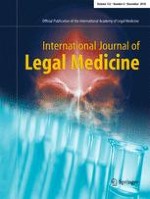Erschienen in:

18.04.2018 | Original Article
Post-mortem chemical excitability of the iris should not be used for forensic death time diagnosis
verfasst von:
Katja Koehler, Susanne Sehner, Martin Riemer, Axel Gehl, Tobias Raupach, Sven Anders
Erschienen in:
International Journal of Legal Medicine
|
Ausgabe 6/2018
Einloggen, um Zugang zu erhalten
Abstract
Post-mortem chemical excitability of the iris is one of the non-temperature-based methods in forensic diagnosis of the time since death. Although several authors reported on their findings, using different measurement methods, currently used time limits are based on a single dissertation which has recently been doubted to be applicable for forensic purpose. We investigated changes in pupil-iris ratio after application of acetylcholine (n = 79) or tropicamide (n = 58) and in controls at upper and lower time limits that are suggested in the current literature, using a digital photography-based measurement method with excellent reliability. We observed “positive,” “negative,” and “paradox” reactions in both intervention and control conditions at all investigated post-mortem time points, suggesting spontaneous changes in pupil size to be causative for the finding. According to our observations, post-mortem chemical excitability of the iris should not be used in forensic death time estimation, as results may cause false conclusions regarding the correct time point of death and might therefore be strongly misleading.